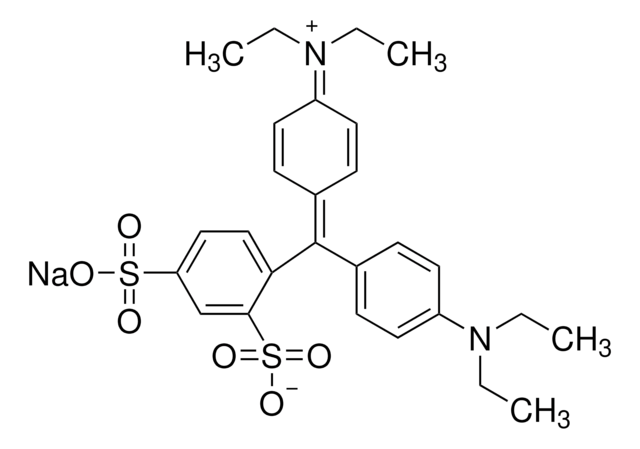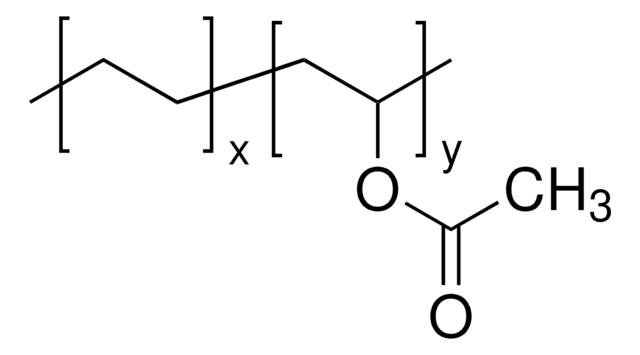Alle Fotos(3)
Wichtige Dokumente
448303
16-Mercaptohexadecansäure
90%
Synonym(e):
MHDA
Anmeldenzur Ansicht organisationsspezifischer und vertraglich vereinbarter Preise
Alle Fotos(3)
About This Item
Lineare Formel:
HS(CH2)15CO2H
CAS-Nummer:
Molekulargewicht:
288.49
MDL-Nummer:
UNSPSC-Code:
12352103
PubChem Substanz-ID:
NACRES:
NA.23
Empfohlene Produkte
Qualitätsniveau
Assay
90%
Form
solid
mp (Schmelzpunkt)
65-69 °C
SMILES String
OC(=O)CCCCCCCCCCCCCCCS
InChI
1S/C16H32O2S/c17-16(18)14-12-10-8-6-4-2-1-3-5-7-9-11-13-15-19/h19H,1-15H2,(H,17,18)
InChIKey
INOAASCWQMFJQA-UHFFFAOYSA-N
Suchen Sie nach ähnlichen Produkten? Aufrufen Leitfaden zum Produktvergleich
Allgemeine Beschreibung
16-Mercaptohexadecanoic acid (MHA) is a long chained alkanethiol which forms self-assembled monolayers (SAMs) on a variety of surfaces.
Anwendung
MHA forms SAMs on gold dipyramids which can be used in the fabrication of nanoresonators for shell-isolated nanoparticle enhanced raman spectroscopy (SHINERS). It can also be used to surface modify gold electrodes that can be used for sensitive detection of clozapine. Gold surfaces can be self-assembled with MHA by polymer pen lithography (PPL) which can be potentially used in bioengineering.
Lagerklassenschlüssel
11 - Combustible Solids
WGK
WGK 3
Flammpunkt (°F)
Not applicable
Flammpunkt (°C)
Not applicable
Persönliche Schutzausrüstung
Eyeshields, Gloves, type N95 (US)
Hier finden Sie alle aktuellen Versionen:
Besitzen Sie dieses Produkt bereits?
In der Dokumentenbibliothek finden Sie die Dokumentation zu den Produkten, die Sie kürzlich erworben haben.
Kunden haben sich ebenfalls angesehen
Large-area molecular patterning with polymer pen lithography.
Eichelsdoerfer DJ, et al.
Nature Protocols, 8(12), 2548-2548 (2013)
Landon J Brower et al.
Beilstein journal of nanotechnology, 8, 2307-2314 (2017-11-29)
Integration of surface-anchored metal-organic frameworks (surMOFs) within hierarchical architectures is necessary for potential sensing, electronic, optical, or separation applications. It is important to understand the fundamentals of film formation for these surMOFs in order to develop strategies for their incorporation
Andreas Mark et al.
Small (Weinheim an der Bergstrasse, Germany), 15(43), e1902976-e1902976 (2019-09-24)
The colloidal probe technique, which is based on the atomic force microscope, revolutionizes direct force measurements in many fields, such as interface science or biomechanics. It allows for the first time to determine interaction forces on the single particle or
Brandon H Bowser et al.
Nanomaterials (Basel, Switzerland), 8(9) (2018-08-26)
Metal-organic frameworks (MOFs) are extremely porous, crystalline materials with high surface area for potential use in gas storage, sequestration, and separations. Toward incorporation into structures for these applications, this study compares three variations of surface-bound and free-standing HKUST-1 MOF structures:
Sensitive detection of clozapine using a gold electrode modified with 16-mercaptohexadecanoic acid self-assembled monolayer.
Huang Fei, et al.
Talanta, 72(2), 457-462 (2007)
Unser Team von Wissenschaftlern verfügt über Erfahrung in allen Forschungsbereichen einschließlich Life Science, Materialwissenschaften, chemischer Synthese, Chromatographie, Analytik und vielen mehr..
Setzen Sie sich mit dem technischen Dienst in Verbindung.













